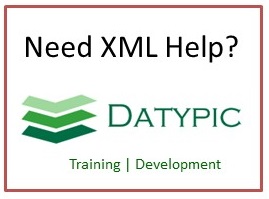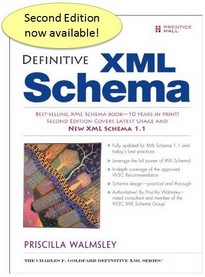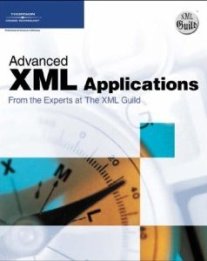entry
CALS Open Table Model cell entry.
Element information
Content
- Choice [0..*]
- marker [0..1]The marker exists wherever #PCDATA is allowed. It is used at the developers discretion.
- added-phraseNewly added or inserted material. This material is usually shown in italic. There are two ways material may be marked as new or deleted. If an entire structure such as a <title> or <section> has been added or deleted, the changed attribute on the structure could be set to “added” or “deleted.” If only a small portion of a structure has been added or deleted, perhaps a few words or a single letter, the <added-phrase> and <deleted-phrase> elements are used to mark those small additions and deletions. Note: This is not the element to be used in an amendment to insert text. This is the element used in a bill or resolution to indicate that text has been added. In an amendment, the text to be inserted is contained within a <text-to-insert> element.
- deleted-phraseWords or phrases which have been stricken or which show strike-through. Material that has been deleted from a bill or resolution is printed and displayed as typographically distinct, to indicate that it has been removed. In current measures, this material is usually shown with a line through it as to indicate that it has been stricken. There are two ways material may be marked as new or deleted. If an entire structure such as a <title> or <section> has been added or deleted, the changed attribute on the structure could be set to “added” or “deleted.” If only a small portion of a structure has been added or deleted, perhaps a few words or a single letter, the <added-phrase> and <deleted-phrase> elements are used to mark those small additions and deletions. Note: This is not the element used in an amendment to strike text. This is the element used in a bill or resolution to indicate text that has been stricken. The instructions in an amendment to indicate that text is to be stricken are marked with the <text-to-strike-out> element.
- internal-xrefPointer, or cross reference, to another portion of the current document.
- external-xrefPointer, or cross reference, to material outside the document.
- fractionA fraction expression that displays or prints inline with regular text (e.g., 2/5).
- superscriptElement to contain superscripted character string.
- subscriptElement to contain subscripted character string.
- italicWords displayed in italic for emphasis or to indicate a book title or ship name or other purposes primarily within text or header elements. Note: This is not used to indicate inserted, instead the added-phrase element is used to indicate inserted text.
- quoteWords displayed in quotation marks for emphasis or to indicate a speech or other purposes primarily within text or header elements. This represents the inline quote element.
- inline-commentAn inline-comment element defines an inline-comment from the author. This element is not displayed on output.
- act-nameContainer within the phrase-level entity that allows an act-name (ex. Civil Rights Act of 1964) to be tagged within the text element.
- formulaContainer for a graphic element representing a scientific or mathematical equation.
- termA word or phrase referencing a definition elsewhere in the document usually in the same text area.
- omitted-textUsed to indicate that a span of copy is not present in the document. This element may be used to tag a few missing characters (horizontal missing text) or any number of missing lines (vertical missing text). Use of this element will result in a line of “stars” (asterisks) being printed or displayed where copy is missing. This line typically consists of three or seven “stars” (asterisks). The Ramseyer portion of Committee Reports also uses three and seven “stars” (asterisks).
- linebreakUsed to force a newline in the output. Should be used very rarely.
- nobreakUsed to hold text together in the output. Primary use is in table cells. Should be used very rarely.
- pagebreakUsed to force a new page in the output. Should be used very rarely.
- boldWords displayed in bold for emphasis or other purposes primarily.
from group pcd-modelfrom group phrase-levelfrom subst. group revisionsfrom subst. group refs
from type tbl.entry.mdl
Attributes
| Name | Occ | Type | Description | Notes |
|---|---|---|---|---|
| colname | [0..1] | xsd:NMTOKEN | This attribute is defined by the OASIS Open Exchange Table Model. Name of column, used to specify the position or horizontal span of columns in a row by reference in entry using colname, namest, and/or nameend.The colname value could be the same as colnum, as its declared value is NMTOKEN, though there is no such requirement. The name space for colnames is different for each tgroup. | |
| namest | [0..1] | xsd:NMTOKEN | This attribute is defined by the OASIS Open Exchange Table Model. Name of leftmost column of span. The value must be some colname in a colspec of the current tgroup. A namest on an entry with no nameend specification indicates the single column so named, though colname is usually used for such a specification. If neither namest nor colname occur, the entry goes in the next column in sequence to the right, skipping over any encroachment from a prior row via entry morerows=N. It is an error if the namest value is not defined in a colspec for the current tgroup. | |
| nameend | [0..1] | xsd:NMTOKEN | This attribute is defined by the OASIS Open Exchange Table Model. Name of rightmost column of span. The value must be some colname in a colspec of the current tgroup. The column must be to the right of the column identified by namest. A nameend attribute without a namest is ignored. | |
| morerows | [0..1] | xsd:NMTOKEN | This attribute is defined by the OASIS Open Exchange Table Model. There shall be at least that many more rows in the appropriate thead or tbody. Any entries with morerows that would attempt to extend further downward is an error. The rowsep is determined when the entry is processed, in the top row if morerows is positive. | |
| colsep | [0..1] | yesorno | This attribute is defined by the OASIS Open Exchange Table Model. Specifies the presence or absence of column separator rules (vertical rules). Provides the default value for all tgroups in this table.If colsep is non-zero, display internal column rules to the right of each entry; if zero, do not display the rules. This value is ignored for the rightmost column, where the frame setting applies. The colsep value is determined by the leftmost column of a spanning entry, even though its effect is on the last column of such spanning entry.This attribute value is implied from the closest element in the inheritance path: colspec then tgroup then table. Note that if a tgroup or table element has no explicit specification for this attribute but does have an associated style sheet that gives a specification for this attribute, then this value shall be used as the value that is inherited from this element. | |
| rowsep | [0..1] | yesorno | This attribute is defined by the OASIS Open Exchange Table Model. Specifies the presence or absence of row separator rules (horizontal rules). Provides the default value for all tgroups in this table.If rowsep is non-zero, display the internal row rules below each entry; if zero, do not display the rules. Ignored for the last row of the table (i.e., the last row of the last tgroup in this table), where the frame value applies.This attribute is implied from the closest element in the inheritance path: row then colspec then tgroup then table. Note that if a tgroup or table element has no explicit specification for this attribute but does have an associated style sheet that gives a specification for this attribute, then this value shall be used as the value that is inherited from this element. | |
| align | [0..1] | Anonymous | To be defined when tables are defined. | |
| char | [0..1] | xsd:anySimpleType | This attribute is defined by the OASIS Open Exchange Table Model. Default source for entrys starting in this column. If character alignment is specified, the value is the single alignment character source for any implied char values for entry immediately in this column. A value of "" (the null string) means there is no aligning character. | |
| charoff | [0..1] | xsd:NMTOKEN | This attribute is defined by the OASIS Open Exchange Table Model. It represents the horizontal offset of the alignment character when align=char .Default source for entrys starting in this column. For character alignment on an entry in the column, horizontal character offset is the percent of the current column width to the left of the (left edge of the) alignment character.This value should be number, greater than 0 and less than or equal to 100. | |
| valign | [0..1] | Anonymous | This attribute is defined by the OASIS Open Exchange Table Model. Default text vertical positioning within the entrys. Provides default value for rows and entrys in thead. | |
| rowsep-modify | [0..1] | Anonymous | from group tbl.entry.att | |
| stub-definition | [0..1] | Anonymous | The first column "entry" of all rows in the table must be defined in order to activate system specific defaults. The choice of definition is based upon the type of data and column start/end consideration. When either the "txt-clr" or "txt-ldr" value, the most commonly used, is specified by this "stub-definition" attribute | from group tbl.entry.att |
| stub-hierarchy | [0..1] | xsd:anySimpleType | A level of indention hierarchy (1 thru 9) value must be specified in the "stub-hierarchy" attribute. | from group tbl.entry.att |
| entry-modify | [0..1] | Anonymous | Attribute to modify a default value | from group tbl.entry.att |
| leader-modify | [0..1] | Anonymous | from group tbl.entry.att |
Used in
- Anonymous type of element row via extension of tbl.row.mdl
- Type tbl.row.mdl


